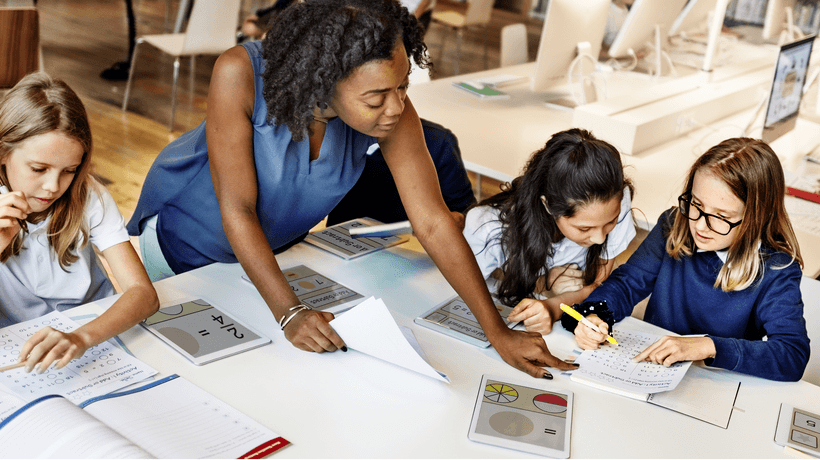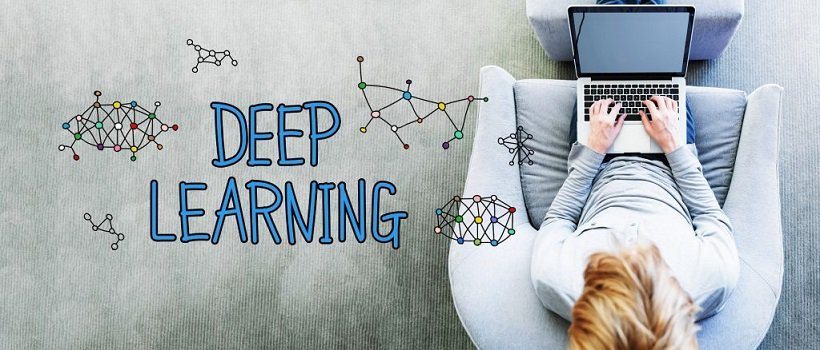Technology And Learning: The Teacher Experience
This two-part article discusses both teacher and student experiences of using technology in education at all levels. The modern global world depends on advanced technology for communication and progress, so it is important that students are adept at using tools for acquiring and applying knowledge needed in life and work. The information discussed shows the different reactions people have to technology and learning styles. A mix of face-to-face and online experiences, called blended learning, appears acceptable to both students and teachers.
As a speech therapist, psychologist, and teacher (English and math), I have often been called into schools to observe struggling students. Once I visited a class of 7 year-olds using iPads in a math lesson. I bent over a lad screwing up his face as if in pain. The iPad asked him to "Combine 6 and 4." He eventually pressed "Listen," but remained puzzled and drew squiggles on the screen instead. I asked if I could help, receiving a nod: "Do you know what ‘combine’ means," I queried. He answered, "No," so I explained it meant "add." His problem was solved and the answer provided. Another time, a girl stared at a screen question: "What number comes after 35?" She tried 34, then 33 and 32, with repeated error messages. The word "after" was confused with "before." I have often muddled left and right as a cross-lateral processor.
This impelled me to look at other students with screens displaying: "Find the odd numbers in the series," "What is this times table?" "How many digits are there before 20?" "What operations are there in the following multiplication?" "Round 79 to the nearest ten," "Write a series with each number the sum of the two preceding ones, starting from 0 and 1." In math, these are called Fibonacci numbers (e.g., 0 1 2 3 5 8 13 21), named after an Italian mathematician. His book, Liber Abaci, introduced the sequence to Europe although it was discussed in 200 BC by Pingala, regarding patterns of Sanskrit poetry formed from syllables of 2 lengths. The journal, Fibonacci Quarterly, illustrates studies of these numbers, as seen in biology and building construction. In the question above, the word "preceding" was unknown.
The point is that mathematical terms learned in other contexts, such as odd, after, times, digits, operations, round and preceding, are often a problem for students not having well developed English language (Sage, 2020). After all, the 500 common words have over 15,000 different meanings. This needs discussing with students. When considering Fibonacci sequences, we collected examples, like a pineapple, fern plant, pine cone, and stem leaves to provide some relevance and purpose for studying them. Medical Research Council Studies on children testing as normal on psychological tests, but failing at school, showed higher level language problems not figuring in assessments. Many subjects showed word confusion (Sage, 2000).
The UK has the most Microsoft Showcase Schools in Europe, announced this software firm in 2021. Headteachers drive schools through digital transformation, with Microsoft experts supporting them. Classes often use the Teams platform, with teachers sharing learning materials and homework. The use of digital technology is highlighted in class with a "bring your own device" policy. Schools are encouraged by hard and software companies to introduce technology into daily teaching. Reform strategies, like school choice and efforts to improve teacher quality, have not resulted in increased student performance across all development. The UK has climbed up the tables of the 2018 Program for International Student Assessment (PISA) for 15-year-old students, but at the expense of other progress.
- Reading: 4th, up from 22nd from tests three years ago
- Science: 14th, up from 15th
- Maths: 8th up from 27th
However, the Organization for Economic Cooperation and Development (OECD) study found just 53% of UK students are satisfied with life, compared to 67% in member countries*. They attribute this to the narrow academic education approach dominated by tests (Schleicher, 2020). This marginalizes personal and practical development, which builds communication, resilience, and adaptability. The teaching unions say tests are tarnished by this well-being data.
Educators place confidence in instructional software to narrow the large test score gap between students at the top and bottom of the socioeconomic scale. The OECD found that technology is limited in bridging the performance divide between these students, with a similar effect for "flipped" classes (OECD.org: Science, Technology & Innovation, 2016 Report). Students watch lectures at home via technology and use class time for discussion and problem-solving, see Matteucci (2019) for the effective use of this method, demonstrating that both teacher and student expertise is needed, such as effective communication abilities.
A 2019 report from the National Education Policy Center (University of Colorado, on personalized learning, a term corresponding with education technology) made robust comments. It found "questionable educational assumptions embedded in influential programs, self-interested advocacy by the technology industry, serious threats to student privacy, and a lack of research support (p.24)." Vulnerable students spend more time on digital devices than advantaged ones, with the dangers of relying on technology in early literacy education. Much of the primary school day is spent on reading and math if there are low test scores for these subjects, so other areas tend to be sidelined. Students tend to work alone on reading and math with digital devices while the teacher assists a small group.
Why Are Devices Unhelpful For Learning?
When students read from screens, they absorb less information than from paper because of a more restricted viewing angle and less tactile experience (Sage, 2020). Another issue is the distraction that devices bring—the primary student scribbling on the screen instead of doing math or a senior one checking Instagram. However, there are serious reasons regarding learning progress (Nuffield Project, Sage, 2015).
1. Motivation
...when intervening with the math student, the problem was spotted and a relationship formed to boost a correct response. Technology conveys information but cannot show social use. Teachers and classmates help make knowledge meaningful so technology may lessen motivation and depress group learning. Experts support students at screens that deliver lessons for ability, interests, and choice. Learners must swap ideas to extend understanding. Allowing topic choice may lead to knowledge gaps (Nuffield lesson plans, Sage, 2015).
2. Understanding
...as in student problems with math instructions. Learners should take pre-tests to select software at appropriate cognitive-linguistic levels but may find this makes false assumptions about understanding. It can supply instruction better than a human in some ways, but if the content is faulty, inadequate, or not presented to suit students, learning is ineffective.
In only a few cases are there defined concepts or standard learning sequences to chart progress. Secondary language literacy and numeracy have development stages when brains are ready to think about whole (4-7 yr.) and parts (7-9 yr.) If teaching tables in math or sound analysis for reading, learning will be difficult before maturation (Sage, 2020). Progress cannot happen unless students have acquired spoken language narratives levels to assemble sequences. Otherwise, we do not know what must be taught or an order for this.
Technology is often used for reading comprehension. Even in classes with no technology, learners are asked to find the main idea and make inferences before having acquired narrative thinking and language. Thus, the content may lack meaning for them. Teachers choose texts to illuminate topics and students read them for reinforcement. When computers/tablets are used, the material takes the same approach, but subject background knowledge and vocabulary are more important than components. For reading comprehension, learners must examine the topic carefully and talk about it together in order to construct knowledge and vocabulary. This is crucial for those from less educated backgrounds, who are unlikely to pick this up at home—and may lack basic terms, as in the student examples above.
Can Technology Build Knowledge?
Software based on brain science can assist creative and critical thinking, retention, and recall. If used for just support it may not work. What are the educational aspects that a computer can do instead of a human? How can technology assist learning aims? To answer questions teachers need an understanding of learning that enables them to deal with problems effectively.
Classes have an ability range but instead of providing students with different content, it works to give them the same information. However, they must have different tasks that take account of narrative development (see Sage, 2020 for examples). Students might study the History of Language, but the more advanced compose a discursive essay, while others produce a poster, a set of comparisons/instructions/report on a key aspect, or other tasks at their narrative level. For teachers, this differentiation is challenging without psycho-linguistic understanding. Technology assists in grouping students by ability, with appropriate tasks and means to assess performance. Video and audio recordings bring topics to life and give access to texts. Digital books are easily updated for those who struggle to read them, as the TOP HAT Company does well. Math software facilitates student debates when they give different answers to the same problem. Also, technology enables gifted students to study content not taught in their context and caters to learning problems with programs designed by experts.
Review
Educators wanting educational equity must consider technology hindrances. Research highlights a digital divide—the lack of access that low-income citizens have to technology and the internet. Students, in the examples, must learn computer use to benefit from online information, but content language issues also need consideration. Software developed in other cultures may use different language expressions and vocabulary for instructions and information that users find unfamiliar. This possibility must be checked by teachers. There is a danger of creating a digital divide of the opposite kind by outsourcing learning to devices for building competencies, while advantaged students have the benefits of being taught by expert teachers, who can adjust learning to suit their individual needs.
This article is Part 1 of a two-part series, read Part 2.
*Note:
The OECD’s 37 members are: Austria, Australia, Belgium, Canada, Chile, Colombia, Czech Republic, Denmark, Estonia, Finland, France, Germany, Greece, Hungary, Iceland, Ireland, Israel, Italy, Japan, Korea, Latvia, Lithuania, Luxembourg, Mexico, the Netherlands, New Zealand, Norway, Poland, Portugal, Slovak Republic, Slovenia, Spain, Sweden, Switzerland, Turkey, the United Kingdom, and the United States.
References:
- Matteucci, R. (2019) What is Technology? In The Robots of Here: Learning to live with them. Ed. R. Sage & R. Matteucci. Buckingham: UBP
- Sage, L. (2015) Motivational Effects on Attention. Plans for Primary and Secondary Schools. Available online in PDF. Nuffieldfoundation.org/projects/motivational-effects-on-attention
- Sage, R. (2000) Class Talk: Successful learning through effective communication. London: Bloomsbury
- Sage, R. (2020) Speechless: Understanding Education. Buckingham: BUP
- Schleicher, A. (2020) Preparing the Next Generation for their Future. Spotlight. London: Newstatesman









